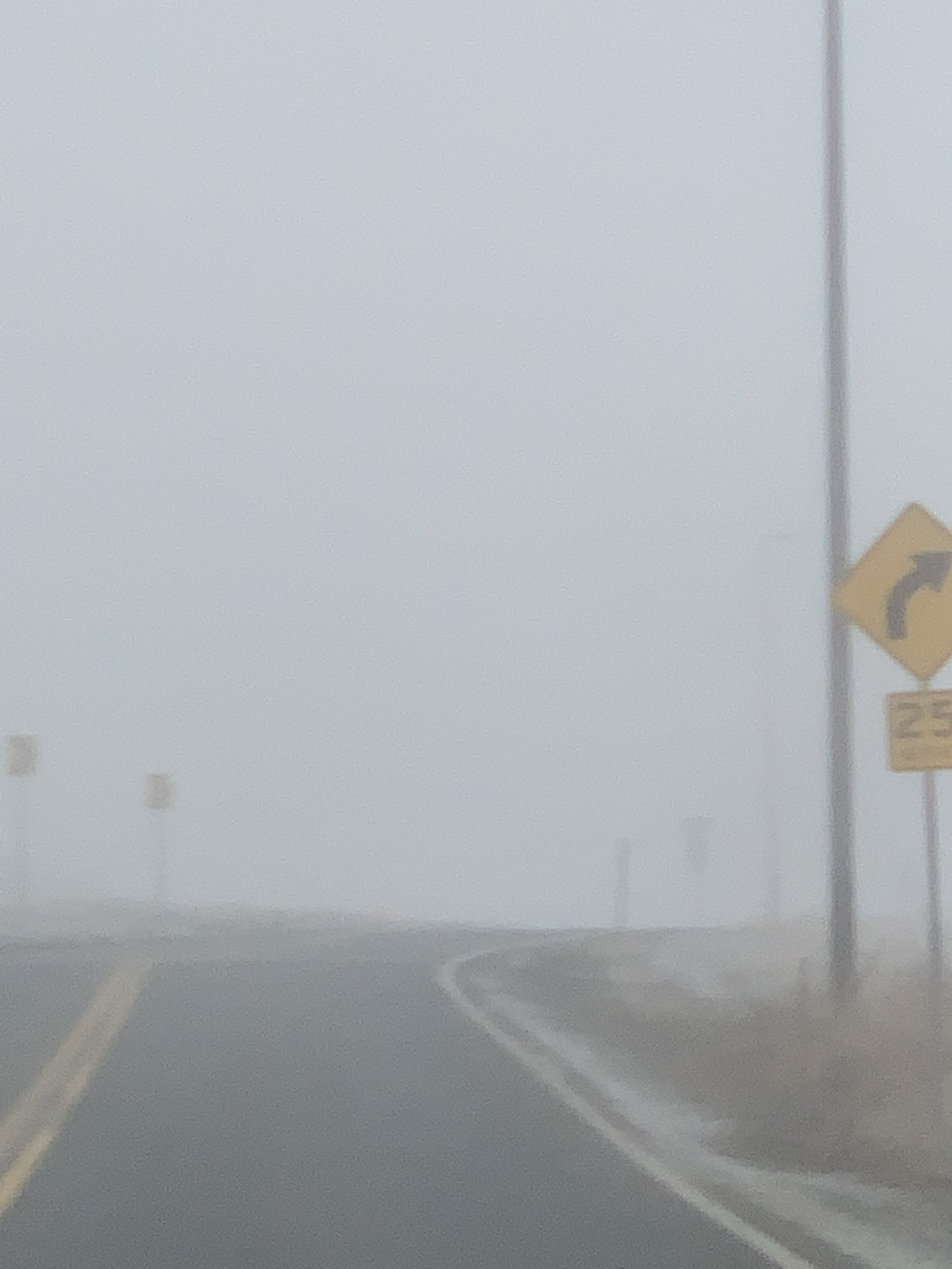Leadership Principle: Embrace the Fog
Fog and Leadership
What does Fog have to do with leadership? From an Artist’s Perspective, I think a lot. What is the best practice when driving in fog? Should we accept the fog or try the best we can to get out of it? This morning was a super cold and foggy day. I needed to go out and get a few things, so I got in my car and started driving in the fog. As I was driving, my mind instantly went to this blog because I found myself looking at the fog differently…from an artist’s perspective. Fog has a way of immediately putting you in a different mindset because of that difference.
Four Observations
I observed a few things as I was driving. First, I needed to turn my car lights on. I couldn’t see without them and I needed the oncoming traffic to be able to know another car was coming their way.
Secondly, I noticed how thick the fog was. Today it was super thick. I could hardly see the stop signs or street signs. In some ways, nothing looked familiar even though I knew I was in a familiar place. What I was experiencing within the “familiar” was “unfamiliar.”
Here is a photo from my morning drive.
I almost didn’t see this curve coming up ahead.
Thirdly, I had to slow down. Even if I was in a hurry, the fog forced me to slow down or I could end up in an accident. I had to really notice what was going on around me. I could not drive on auto-pilot. I could not simply get in my car, listen to the music, eat my snack or drink my coffee. I could not do business as usual. I had to be attentive to this new situation.
The fourth thing I began to note were my actual feelings as I was driving in the fog. In some ways, it was a little scary. Questions were going through my mind:
Will I run into the car ahead of me?
Or worse, will I see the curve ahead in time to turn?
I know the curve is there, but I don’t know where.
Will the car coming toward me even see me? I hope so.
Maybe I was feeling a little bit of anxiety as I drove. I noticed my knuckles holding the steering wheel too tight. I told myself: Your knuckles are getting white. You need to relax and take a deep breath. All of this was going through my mind.
But Then Something Changed
I got past all of that and realized that I was not going to get out of the fog any time soon; so I started to almost enjoy the moment. I started to notice what was going on around me. Yes, there was fog; but I also began to see the things that were in front of me and around me in a new light. The surroundings were familiar, yet, they were totally unfamiliar. Why? The fog changed it all. I noticed that I couldn’t see very far ahead of me. It forced me to see what was right in front of me.
The Fog Simplified My Vision
In some ways, the fog simplified my vision. The fog eliminated everything that was peripheral. It forced all the details and minutia that had been in my life at that moment to disappear which enabled me to focus on the things that were right in front of me. I realized that even though I drove by this scene every day, I saw it in a new way today. The fog changed my “seeing.”
I realized that as artists, we are constantly trying to see things from a different perspective with a new light. That is where the creativity is. It is seeing something familiar but in a new and innovative way.
What would it look like for you to look at your situation with a new set of “eyes?”
What would it look like for you as a leader to see your situation from a new perspective? As an artist, I must slow down to get to this place. Just like driving in fog and purposely slowing down because your surroundings have forced you to see something totally different. The question then becomes, “Is it possible to actually create an environment which mentally forces you to a place where you invite the ‘fog’ in? A place where you can eliminate the unimportant details and minutia and simply focus on that which is important?” As a painter, I try to do this with every painting I create. I try to simply the image, eliminate all the unimportant details, and focus on what is most important to me in the painting.
It Goes Back To Vision
One way you can do this is to ask the simple questions. This is like turning your vehicle lights on while driving in fog. You turn the lights on by asking questions: What is really important to me right now? What do I need to eliminate in my life that is distracting me from really accomplishing what I want to accomplish? What is the most meaningful to me at this moment? Invite the “fog” in so that you can really focus on the essentials. This comes by asking questions and taking the time to answer those questions.
The good news in all of this is that the fog will lift, just like it did when I was driving. At some point the situation will change back to normal. The unfamiliar will become familiar again. However, maybe what we experienced in the “fog times” will actually help us be better when we get back into our routine. Maybe we can have greater focus in our lives. If you can live like an artist, whether you are one or not, and invite the “fog” in and eliminate all the unimportant details, then maybe you can discover a lot of creativity and inspiration coming your way. I like what Emily Dickinson said, “Let us go in; the fog is rising.” (Biographyonline.net)
Embrace the fog and Keep the Creative Edge!
If you want to know more about fog in general, what causes it, the scientific behind it and even the visual and audio effects of fog, go to wikipedia.org.
Want more creative tips: sign up for my weekly blog post & art updates




